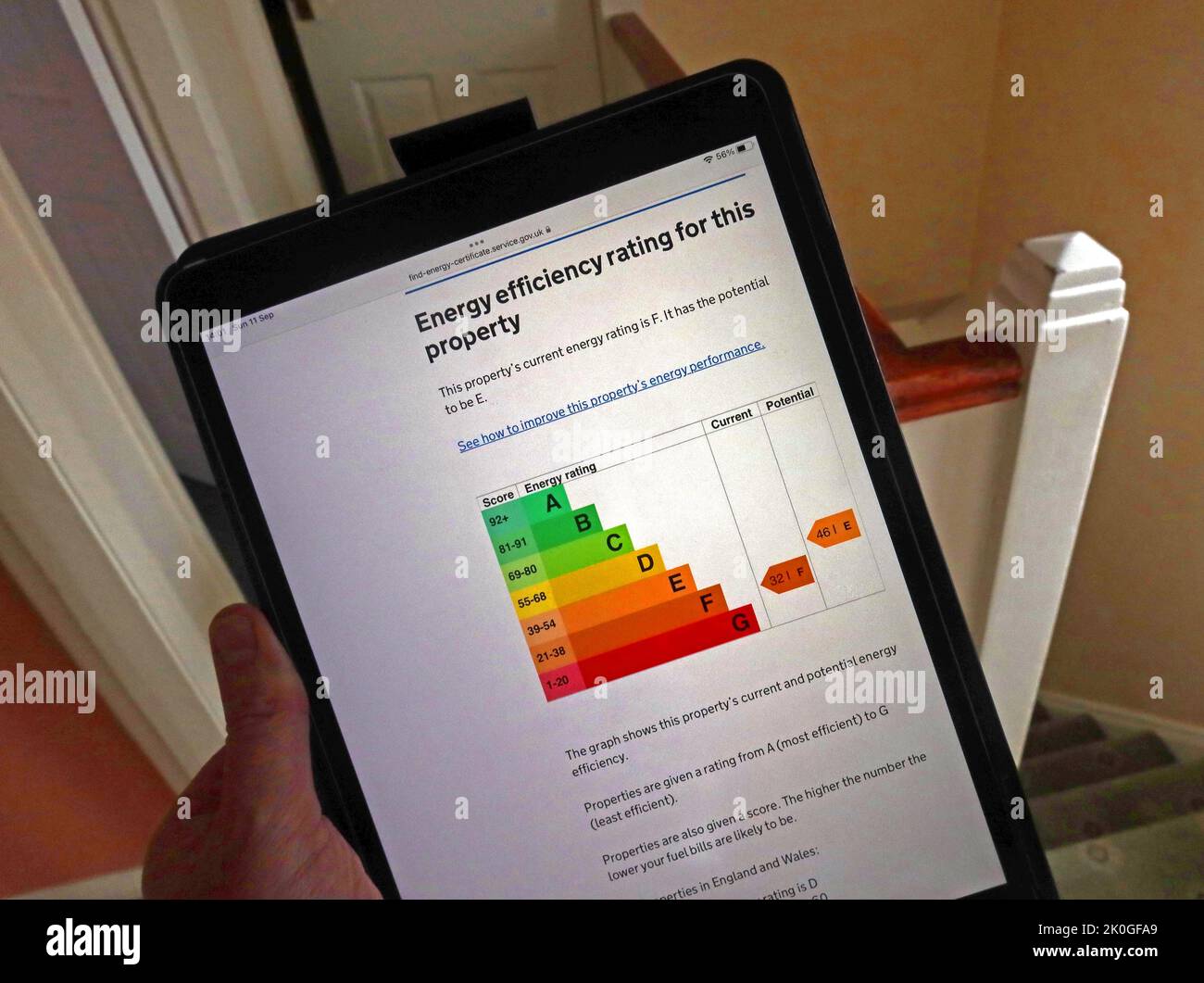EPC energy Performance Certificate, for property badly insulated and with very poor efficiency rating of F able to be improved to E, on an iPad tablet

Image details
Contributor:
Tony SmithImage ID:
2K0GFA9File size:
51 MB (2 MB Compressed download)Releases:
Model - no | Property - noDo I need a release?Dimensions:
4884 x 3648 px | 41.4 x 30.9 cm | 16.3 x 12.2 inches | 300dpiDate taken:
11 September 2022Location:
United KingdomMore information:
15% of landlords surveyed have no knowledge of the upcoming changes to EPC rules Properties risk becoming ‘unrentable’ if landlords do not make necessary changes More than a third (36%) of landlords say their rentals were built pre-1940 4 in 10 landlords say their London properties were built pre-1940, similarly in the South West, Scotland and Wales 1 in 7 (15%) landlords surveyed have no knowledge of the upcoming legislative changes to the Energy Performance Certificate (EPC), according to new research from Shawbrook Bank.* From 2025, all newly rented properties will be required to have an EPC rating of C or above. Currently properties only require an EPC rating of ‘E’ or above. Existing tenancies will have until 2028 to comply with the new rule changes. As a result, millions of properties risk potentially being declared ‘unrentable’ and subsequently ‘unsellable’ or ‘unmortgageable’ due to landlords being uninformed about what the changes will mean for current and prospective tenancies. Landlords currently unaware of the level of work needed on their property, or properties, could be risking a loss in income until all necessary work is carried out. In severe cases, where a substantial amount of work needs to be done to improve a property’s EPC rating, landlords could find themselves unable to secure appropriate financial support to carry out the works. A quarter (25%) of landlords surveyed said they had little to no knowledge of the forthcoming changes, with long-time landlords – those who have been renting out properties for over 10 years – found to be less aware of the changes and what impact this could have on their properties. With a large proportion (36%) of landlords with properties built pre-1940, Shawbrook’s analysis suggests that a significant number of landlords will be required to make changes. Delving deeper into what this means on a regional level, four in 10 landlords say that their properties in London were built prior to 1940